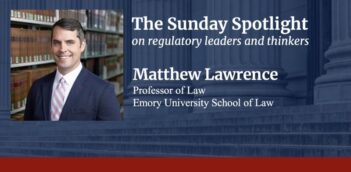
Social license and the bundling of laws and resources can constrain tech companies from aggressive maneuvering.
Despite policymakers’ intentions, big tech companies and entrepreneurial upstarts sometimes use their considerable resources to work around applicable law. Regulatory arbitrage occurs when companies take advantage of either gaps or differences between regulatory regimes. For instance, when two jurisdictions tax companies differently, a business that incorporates in a location to pay lower taxes engages in regulatory arbitrage.
In a recent paper, Elizabeth Pollman of the University of Pennsylvania Law School examines how social license and the bundling of laws and resources can constrain regulatory arbitrage. Further, she highlights that in some instances, alternative strategies to arbitrage may offer more promising outcomes for business models or innovations that aim to change laws and operate on a global scale.
Using the ridesharing company Uber as an example, Pollman argues that tech companies’ aggressive gamesmanship of regulations can create publicly visible social costs. These costs can erode social license and subsequently affect their ability to pursue profitable operations. Drawing on important recent work by Hillary Sale of Georgetown University Law Center on social license, Pollman observes that this term describes the legitimacy the public confers upon companies that allows them to operate. Social license is created by building trust and credibility with stakeholders and communities. Pollman explores how the threat of losing social license might serve as a check on businesses that are tempted to flout regulations.
In its early years, Uber earned public approval by creating a user-friendly interface and convenient access to rides. Over time, the company weakened its social license by aggressively arbitraging the worker status of its drivers and sparking a series of corporate scandals. As a result, Uber faced pressure for corporate governance changes, additional governmental oversight, and restrictions on its license to operate in some locations. Notably, Pollman observes that the strength and effectiveness of public approval and trust as a constraint may vary by company, industry, community, and across different time periods. For instance, social pushback could be triggered more quickly or be more costly for consumer-facing tech companies operating in an environment of tech backlash.
Although companies can sometimes earn public approval through regulatory arbitrage, as Uber did early in bringing lower prices to its riders, Pollman asserts that the public is more likely to frown upon regulatory arbitrage that violates community norms. As some tech companies’ business models rely on user trust, she notes they should be particularly sensitive to maintaining social license and might otherwise face existential threat. Pollman acknowledges, however, that the threat of losing social license may not effectively constrain companies if the public cannot see the problematic behaviors or lacks the will to rebuke companies.
In addition to social license, Pollman also explores how the bundling of laws and resources can act as a constraint on regulatory arbitrage. The opportunity for a company to engage in regulatory arbitrage does not arise in isolation, but rather in a system of laws and under the pressure of other needs and preferences, including attracting and maintaining a productive workforce, investment capital, and brand value.
Through examples such as Amazon’s headquarter search, Pollman shows that the greater the extent to which a law is bundled, the less room there may be for regulatory arbitrage to function as a valuable strategy. Out of many cities offering lucrative deals, Amazon chose to develop new headquarters in some of the most expensive U.S. cities—but these cities offer large talent pools, cosmopolitan lifestyles and branding, and the potential for political access. Another illustration of the bundling point is Facebook’s recent change to its terms of service, which shifted user data from its Ireland office, with low corporate tax rates, to its U.S. headquarters, which falls under less strict privacy laws.
Finally, Pollman highlights that in some circumstances there are gaps or differences in laws that offer an opportunity for arbitrage, but companies might nonetheless choose the more difficult path of pushing for broader legal change. The pursuit of “regulatory entrepreneurship”—a term she coined with Jordan Barry of the University of San Diego School of Law—reflects how arbitrage can be of limited utility in a regulatory environment that impedes certain new business models or innovations from operating on a global scale. Electric scooter company Bird, for instance, did not launch only in locations with favorable laws because that would have stunted the company’s growth and ability to raise venture capital. Although it has faced significant challenges, Bird has often mobilized users for support and lobbied city officials to create favorable rules. Pollman highlights that when strategic legal avoidance is not plausible at scale, regulatory entrepreneurship represents a contrasting strategy.



